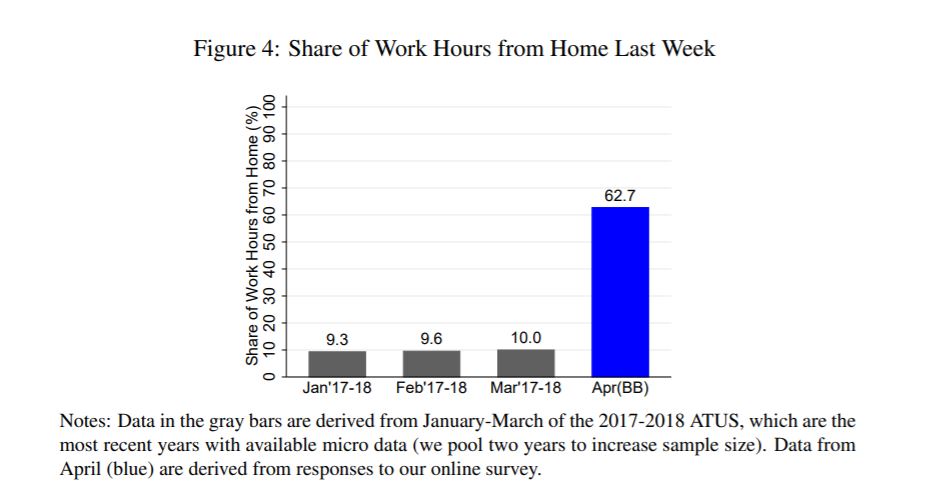A fantastic "real time" analysis of what is happening in the U.S. job market, from Alexander Bick (Arizona State U) and Adam Bland (Virginia Commonwealth U) https://alexbick.weebly.com/uploads/1/0/1/3/101306056/bb_covid.pdf
20%">https://alexbick.weebly.com/uploads/1... of LF was unemployed mid April (almost 30M people).
Half were temporary layoffs.
/2
20%">https://alexbick.weebly.com/uploads/1... of LF was unemployed mid April (almost 30M people).
Half were temporary layoffs.
/2
Yes, hours worked also fell, but among U.S. workers, almost two-thirds (63%) worked from home in mid April, compared to ~10% previously
Both pieces of info (20% UR and % working from home) likely are mirrored in the Canadian example.
i.e. most people are still working.
/3
Both pieces of info (20% UR and % working from home) likely are mirrored in the Canadian example.
i.e. most people are still working.
/3
How much income was lost? LFS doesn& #39;t ask this question.
This survey showed, for those doing the same job as last month, 62% saw no change in earnings.
22% made less (about 4% lost 3/4 of earnings); 11% made more.
Wonder how that compares in Canada.
/4
This survey showed, for those doing the same job as last month, 62% saw no change in earnings.
22% made less (about 4% lost 3/4 of earnings); 11% made more.
Wonder how that compares in Canada.
/4
LFS asks about jobs, not earnings. Covid19 triggered an income security issue.
All our emergency economic responses are about stabilizing purchasing power.
We need more real time data in Canada
cc @DIGoldfarb @RIWIdata
All our emergency economic responses are about stabilizing purchasing power.
We need more real time data in Canada
cc @DIGoldfarb @RIWIdata
Last point for the "cut everyone a cheque" crowd: notwithstanding lack of official stats, analyses like this suggest majority of people still working, but many lost income. (Canada had 19.2M workers pre Covid19.)
CERB (and Wage Subsidy) is the right approach.
Needs expansion.
CERB (and Wage Subsidy) is the right approach.
Needs expansion.

 Read on Twitter
Read on Twitter




